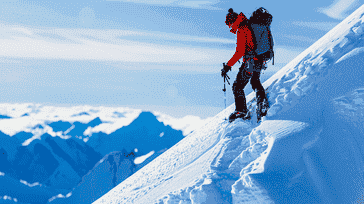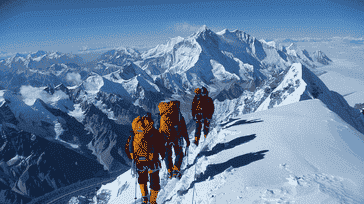High-altitude Training: Preparing Your Body for the Demands of Mountaineering

Introduction to high-altitude training
As an avid mountaineer, I have always been fascinated by the challenges and rewards that come with reaching the summit of a mountain. However, I quickly learned that mountaineering is not for the faint of heart. It requires physical and mental strength, as well as the ability to adapt to high-altitude environments. In this article, I will delve into the world of high-altitude training and share valuable insights on how to prepare your body for the demands of mountaineering.
Benefits of high-altitude training for mountaineering

High-altitude training offers numerous benefits for mountaineers. One of the key advantages is the improvement in cardiovascular fitness. When you train at high altitudes, your body is exposed to lower oxygen levels, which forces it to work harder to deliver oxygen to your muscles. This, in turn, increases your lung capacity and strengthens your heart. Additionally, high-altitude training helps to improve your endurance and stamina, allowing you to perform better during long and grueling climbs.
Another benefit of high-altitude training is acclimatization. When you ascend to higher altitudes, your body needs time to adjust to the lower oxygen levels. High-altitude training allows you to gradually expose your body to these conditions, helping it to adapt more efficiently. This can significantly reduce the risk of altitude sickness, which is a common concern among mountaineers. By acclimatizing properly, you can increase your chances of a successful and safe climb.
Understanding the demands of mountaineering
Before embarking on any high-altitude expedition, it is crucial to have a thorough understanding of the demands of mountaineering. Mountaineering is an extreme sport that requires physical strength, mental resilience, and technical skills. It involves navigating steep and treacherous terrain, enduring extreme weather conditions, and carrying heavy loads. Furthermore, mountaineers often have to deal with altitude-related challenges such as thin air, low temperatures, and the risk of frostbite.
To succeed in mountaineering, you need to be prepared for these demands. This means being in peak physical condition, mentally focused, and equipped with the necessary technical skills. High-altitude training plays a crucial role in preparing your body and mind for these challenges, ensuring that you can perform at your best when it matters the most.
Physical preparation for high-altitude expeditions

Physical preparation is a fundamental aspect of high-altitude training. To prepare your body for the demands of mountaineering, it is important to focus on building strength, endurance, and flexibility. Incorporating a combination of cardiovascular exercises, strength training, and flexibility exercises into your training routine will help you develop the necessary physical attributes for mountaineering.
Cardiovascular exercises such as running, cycling, and swimming are excellent for improving your cardiovascular fitness and endurance. These exercises should be performed at varying intensities, simulating the conditions you will encounter during a climb. Additionally, strength training exercises like weightlifting and bodyweight exercises will help you build the necessary muscle strength to carry heavy loads and navigate difficult terrain. Finally, dont forget to include flexibility exercises like yoga or Pilates to improve your range of motion and reduce the risk of injuries.
Mental preparation for high-altitude expeditions
While physical preparation is essential for mountaineering, mental preparation is equally important. The mental challenges faced during high-altitude expeditions can be just as demanding as the physical ones. Mental resilience, focus, and decision-making skills are crucial for a successful climb. Incorporating mental training techniques into your high-altitude training can greatly enhance your performance on the mountain.
Visualization is a powerful technique that can help you mentally prepare for mountaineering. Take the time to visualize yourself successfully navigating challenging terrain, overcoming obstacles, and reaching the summit. This can help build confidence and reduce anxiety. Additionally, practicing mindfulness or meditation can help you stay focused and calm in stressful situations. Mental exercises such as problem-solving and decision-making simulations can also improve your ability to make sound judgments while on the mountain.
High-altitude training techniques

High-altitude training techniques are designed to simulate the conditions you will encounter during a climb. These techniques help your body adapt to the lower oxygen levels, improving your endurance and reducing the risk of altitude sickness. One common technique is altitude training, which involves training at high altitudes or using altitude simulators to expose your body to reduced oxygen levels. This can be done either by traveling to high-altitude locations or by using specialized equipment that reduces the oxygen concentration in the air you breathe.
Another effective technique is interval training, which involves alternating between periods of high-intensity exercise and rest. This type of training helps improve your cardiovascular fitness and endurance, making it ideal for high-altitude expeditions. Additionally, incorporating strength training exercises that target the specific muscles used during mountaineering, such as the legs, core, and upper body, can further enhance your performance.
Nutrition and hydration for high-altitude training
Proper nutrition and hydration are vital for high-altitude training and mountaineering. When training at high altitudes, your body requires additional fuel to cope with the increased physical demands and to support the acclimatization process. It is important to consume a well-balanced diet that includes carbohydrates for energy, lean proteins for muscle repair and growth, and healthy fats for sustained energy.
Hydration is equally important, as dehydration can exacerbate the effects of high altitude on your body. Aim to drink at least 2-3 liters of water per day, and consider consuming electrolyte-rich drinks to replenish essential minerals lost through sweating. Additionally, it is important to avoid excessive alcohol consumption, as it can impair judgment and increase the risk of dehydration.
Safety considerations for high-altitude training
When engaging in high-altitude training, safety should always be a top priority. It is essential to be aware of the potential risks and take appropriate precautions to minimize them. Always consult with a medical professional before starting any high-altitude training program, especially if you have any pre-existing medical conditions.
Additionally, it is crucial to pay attention to your body and listen to its signals. If you experience symptoms of altitude sickness, such as headache, dizziness, or nausea, descend to lower altitudes immediately. Familiarize yourself with the signs of frostbite and hypothermia, and make sure to have the necessary gear to protect yourself from extreme cold. Finally, never underestimate the power of weather conditions. Always check the weather forecast before heading out and be prepared to adjust your plans accordingly.
Gear and equipment for high-altitude expeditions
Having the right gear and equipment is essential for a safe and successful high-altitude expedition. Invest in high-quality mountaineering boots that provide excellent traction and insulation. Layered clothing is crucial for managing your body temperature and protecting yourself from extreme cold. Make sure to have a waterproof and windproof outer layer, as well as thermal base layers and insulating mid-layers.
Other essential gear includes a climbing harness, helmet, ice axe, crampons, and a backpack that can comfortably carry all your gear. It is also important to have a reliable navigation system, such as a compass and map, as well as a GPS device. Dont forget to pack essential safety equipment, such as a first aid kit, emergency shelter, and a communication device.
Training programs and resources for mountaineering
To embark on a high-altitude expedition, it is beneficial to follow a structured training program tailored to mountaineering. Many organizations and mountaineering schools offer training programs that cover both the physical and technical aspects of mountaineering. These programs can help you develop the necessary skills, knowledge, and fitness required for a successful climb.
Additionally, there are numerous resources available, such as books, online courses, and instructional videos, that provide valuable insights and guidance on mountaineering. These resources can help you learn about different climbing techniques, navigation skills, and safety protocols. Remember to seek guidance from experienced mountaineers and professionals in the field to ensure you are following the best practices and staying safe.
Conclusion
High-altitude training is an essential component of preparing your body for the demands of mountaineering. By focusing on physical and mental preparation, incorporating high-altitude training techniques, and paying attention to nutrition, hydration, safety considerations, and gear, you can enhance your performance and increase your chances of a successful climb. Remember, mountaineering is a challenging and rewarding adventure that requires dedication, perseverance, and a deep respect for the mountains. So, lace up your boots, train hard, and embrace the journey to the summit.
CTA: Are you ready to take on the challenges of mountaineering? Start your high-altitude training today and embark on the adventure of a lifetime. Remember to always prioritize safety and seek guidance from experienced mountaineers. Happy climbing!
Note: This article is for informational purposes only and does not replace professional guidance. Always consult with a medical professional and experienced mountaineers before engaging in high-altitude training or mountaineering.